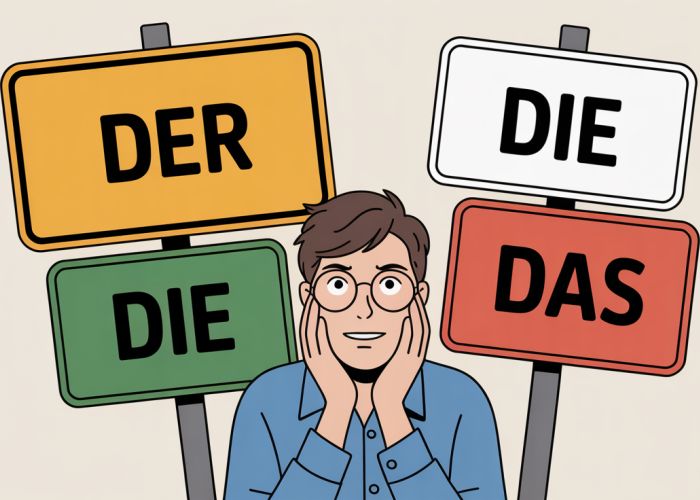Understanding German gender, especially when it comes to demonstrative pronouns like dieser, diese, and dieses, can feel like navigating a maze. The **German language** assigns a gender (masculine, feminine, or neuter) to every noun, and correctly using the ‘this’ variants, a core component of german ‘this’ grender, directly impacts sentence accuracy. Knowing the ‘this’ rule is essential. Learning resources like the **Goethe-Institut** offer courses focusing on German grammar, while apps such as **Duolingo** include exercises to practice identifying the gender of nouns. Many learners find mastering this aspect simpler with the help of a **German tutor**, ensuring clear comprehension.

Unlocking German Gender: The "This" Rule You Must Know!
This guide will help you understand a simple, yet powerful rule using "this" (or rather, its German equivalent) to predict and remember the gender of many German nouns. Understanding gender (masculine, feminine, or neuter) is crucial for correct German grammar, as it affects articles, adjectives, and pronouns. Let’s dive in!
Why German Gender Matters
German nouns each have a gender. Unlike English, this gender isn’t always related to the real-world meaning of the word. A "girl" (Mädchen) is neuter, for example. The gender dictates which article (der, die, das) precedes the noun and how other words change to agree with it. Ignoring gender leads to grammatical errors that can confuse native speakers.
- Articles: Knowing the gender tells you which definite article (the) to use: der (masculine), die (feminine), or das (neuter).
- Adjectives: Adjective endings change depending on the noun’s gender.
- Pronouns: Pronouns referring back to the noun need to match its gender.
The "This" Rule: Using Demonstrative Pronouns
The "This" rule revolves around demonstrative pronouns – words like "this" and "that." In German, these demonstrative pronouns change based on the gender of the noun they are replacing. By learning which form of "this" to use, you get a massive clue about the noun’s gender. Think of it as a secret key!
Understanding the Forms of "This" in German
The most useful forms for our "this" rule are dieser (masculine), diese (feminine), and dieses (neuter). Here’s a breakdown:
| Gender | German "This" | English "This" (Approx.) | Example |
|---|---|---|---|
| Masculine | dieser | This (one) – masculine | dieser Mann (this man) |
| Feminine | diese | This (one) – feminine | diese Frau (this woman) |
| Neuter | dieses | This (one) – neuter | dieses Kind (this child) |
How to Use the Rule
Imagine you encounter a new noun and don’t know its gender. Try associating it with one of the "this" forms. For example, if you’re learning the word Tisch (table) and someone says "dieser Tisch," you instantly know Tisch is masculine.
Let’s explore this with some more examples:
-
Example 1: die Lampe (lamp)
You hear someone say "Diese Lampe ist schön." (This lamp is beautiful.) Since diese is used, you know Lampe is feminine.
-
Example 2: das Buch (book)
Someone tells you, "Dieses Buch ist interessant." (This book is interesting.) Because of dieses, you can deduce that Buch is neuter.
-
Example 3: der Stuhl (chair)
Hearing "Dieser Stuhl ist bequem." (This chair is comfortable.) informs you that Stuhl is masculine.
Practicing with Sentences
The best way to internalize the "This" rule is through practice. When learning new nouns, try to use them in sentences with dieser, diese, or dieses. For example:
- Dieser Computer ist schnell. (This computer is fast.)
- Diese Blume riecht gut. (This flower smells good.)
- Dieses Haus ist groß. (This house is big.)
Limitations of the "This" Rule
While helpful, the "This" rule isn’t foolproof. It requires hearing the noun used correctly with the demonstrative pronoun. You won’t be able to guess the gender of a noun before you encounter it with the correct article or demonstrative. It’s a great tool for reinforcing gender once you’ve been exposed to it.
FAQ: Mastering German Gender with the ‘This’ Rule
This FAQ section addresses common questions about using the "This" rule to help you master German gender, as discussed in the main article. Hopefully, this will clarify any remaining doubts.
How does the "This" rule help me learn German gender?
The "This" rule uses the demonstrative pronouns "dieser," "diese," and "dieses" (this) as a mnemonic device. By associating these pronouns with masculine, feminine, and neuter genders respectively, you create a direct link. Remembering "dieser Mann" (this man) reinforces that "Mann" is masculine.
Is the "This" rule foolproof? Does it work every time?
No, the "This" rule isn’t a perfect solution. There are always exceptions in German grammar. However, it’s a strong starting point for building intuition around german ‘this’ gender and greatly improves your ability to guess correctly.
Why use demonstrative pronouns instead of articles like "der," "die," and "das?"
Using "dieser," "diese," and "dieses" for the german ‘this’ gender is easier to visualize and remember in the early stages. It creates a clearer mental link between the word and its gender, compared to the more abstract articles.
Can I just memorize the gender of every noun?
While memorization is helpful to a certain extent, it’s not efficient long-term. Understanding patterns and rules, like the "This" rule, gives you the ability to predict the german ‘this’ gender even for unfamiliar words, which significantly aids fluency.
So, there you have it! Hopefully, demystifying the whole german ‘this’ grender thing makes a little more sense now. Keep practicing and don’t be afraid to make mistakes – that’s how you learn! Good luck!



